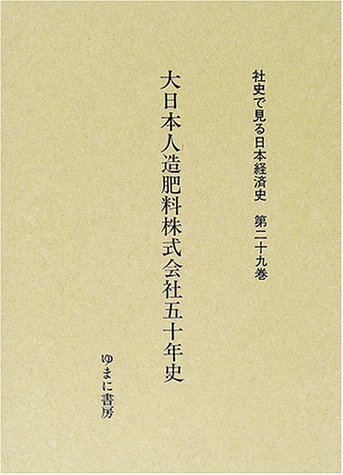1 0 0 0 OA コミュニティ構造の影響を考慮したネットワーク成長モデルの提案
1 0 0 0 OA マルチパス測定型水中音響多重通信に関する基礎研究
- 著者
- 海老原 格
- 巻号頁・発行日
- 2012
科学研究費助成事業(科学研究費補助金)研究成果報告書:研究活動スタート支援2010-2011
1 0 0 0 OA ドクムギ属の除草剤抵抗性遺伝子の拡散リスク評価
- 著者
- 下野 綾子
- 巻号頁・発行日
- 2012
科学研究費助成事業(科学研究費補助金)研究成果報告書:研究活動スタート支援2010-2011
- 著者
- Nawahdah Mamoun
- 巻号頁・発行日
- 2013-03
Thesis (Ph. D. in Information Science)--University of Tsukuba, (A), no. 6647, 2013.3.25
1 0 0 0 OA 〈特別寄稿〉 筑波大学での一年間をふりかえって
- 著者
- 郑 莹媛
- 出版者
- 筑波大学教育制度研究室
- 雑誌
- 教育制度研究紀要
- 巻号頁・発行日
- no.8, pp.83-84, 2013-02
1 0 0 0 OA 〈卒業論文報告〉 Miles Davisの音楽性の源泉を幼少期に探る
- 著者
- 山本 陽一
- 出版者
- 筑波大学教育制度研究室
- 雑誌
- 教育制度研究紀要
- 巻号頁・発行日
- no.8, pp.73-75, 2013-02
- 著者
- 宮 玉婷
- 出版者
- 筑波大学教育制度研究室
- 雑誌
- 教育制度研究紀要
- 巻号頁・発行日
- no.8, pp.69-72, 2013-02
- 著者
- 田邉 良祐
- 出版者
- 筑波大学教育制度研究室
- 雑誌
- 教育制度研究紀要
- 巻号頁・発行日
- no.8, pp.63-68, 2013-02
- 著者
- 藤井 厚子
- 出版者
- 看護の科学社
- 雑誌
- 看護実践の科学 (ISSN:03854280)
- 巻号頁・発行日
- vol.36, no.11, pp.9-15, 2011-10
- 著者
- 城戸口 和美
- 出版者
- 看護の科学社
- 雑誌
- 看護実践の科学 (ISSN:03854280)
- 巻号頁・発行日
- vol.36, no.11, pp.4-9, 2011-10
1 0 0 0 Les gouttes de Dieu
- 著者
- scénario Tadashi Agi dessins Shu Okimoto
- 出版者
- Glénat
- 巻号頁・発行日
- 2008
1 0 0 0 大日本人造肥料株式会社五十年史
- 著者
- 金子 邦子
- 出版者
- 広島大学経済学会
- 雑誌
- 広島大学経済論叢 (ISSN:03862704)
- 巻号頁・発行日
- vol.36, no.2, pp.19-43, 2012-12
- 著者
- 澤谷 真奈美 小野 昭子 河野 恵三 河島 トモ子 谷口 美文 池上 伯郎 臼井 美津子 栗本 雅司
- 出版者
- 一般社団法人 日本アレルギー学会
- 雑誌
- アレルギー
- 巻号頁・発行日
- vol.43, no.3, pp.467-473, 1994
- 被引用文献数
- 8
スギ花粉の主要アレルゲンCry j I, Cry j IIをそれぞれ特異的に定量するELISA系を開発した. Cry j IあるいはCry j IIに対するウサギポリクローナル抗体(poly Ab)あるいはマウスモノクローナル抗体(mAb)を吸着させたマイクロプレートに, アレルゲン, ビオチン化抗体, horseradish peroxidase (HRPO)標識ストレプトアビシンを順次反応後, 固相に結合した酵素活性を比色法で定量した. これらのELISA系(Cry j I ELISA, Cry j II ELISA)の測定範囲は, それぞれ0.3〜20ng/ml, 0.6〜20ng/mlであり, 測定内及び測定間変動係数は1.5〜10.3%, 0.9〜12.9%でいずれも良好な再現性を有していた. また, mAbを用いたものでは, Cry j I, Cry j II間において交差反応が無いのみならず, ヒノキなど代表的なスギ近縁植物花粉アレルゲンとの交差反応も極めて低かった. 今後, この両ELISA系はスギ花粉症の診断, 治療に欠かすことのできないスギ花粉主要アレルゲンの解析や, スギアレルゲンエキスの標準化など多方面で活用できるであろう.
1 0 0 0 花粉管生長テストによる堆肥の腐熟度検定法とその特徴
- 著者
- 小西 戎毅 若澤 秀幸 青山 仁子 中村 元弘 山下 春吉
- 出版者
- 一般社団法人日本土壌肥料学会
- 雑誌
- 日本土壌肥料學雜誌 (ISSN:00290610)
- 巻号頁・発行日
- vol.57, no.5, pp.456-461, 1986-10-05
- 被引用文献数
- 8
堆肥腐熟度の検定のための新しい方法として,花粉管生長テストが使用しうるかどうかを,種子発芽試験,幼植物試験との比較から検討した。家畜ふん木質混合堆肥,バーク堆肥,スラッジ堆肥などの10種類を用い,またそれぞれ堆積期間,ロットの異なる合計113点の堆肥を供試した。堆肥に2倍量の水を加え,1昼夜常温で浸し,抽出し,その液を被検液とした。花粉はチャの花粉を用い,蔗糖8%,ホウ素17ppmを含むpH5.5の基準寒天培地で培養した。花粉管生長テストには2つの方法を用い,また幼植物試験ではコマツナを用い,同様2つの方法を用いた。ウェル法:ペトリ皿の基準観点培地の周囲に等間隔で直径5mmの6つの搾せつ穴(ウェル)をあけ,それに接して中心に向かって直線状(18mm)に花粉を置床した。ついで,被検液をその穴に注入し,20時間培養した。そして,未発芽,不完全生長帯の長さを測定し,完・不完全阻害とした。 培地法:基準寒天培地の作製時に被検液を直接加え,ウェル法同様花粉を6条置床し,培養した。そして,花粉管長を測定した。発芽試験:被検液を10mlペトリ皿のろ紙上に添加し,種子を播種し,4〜5日後その種子根長を測定した。幼植物実験:堆肥を土壌重量の1/2量施用し,全層混合した。そして,種子を播種し,1カ月後採取,乾物重を測定した。これらの4つの方法での測定値間での相関,分布状況,意味を検討した。その結果,花粉管生長テストの2方法は堆肥の腐熟度に対し感度よく応答し,その測定値は2つの幼植物試験による値よりも大変精度がよかった。作物の安全性を中心に,感度と精度から,次の順序で優れると結論した。培地法>ウェル法>発芽試験>幼植物試験 この花粉管生長テストは素材や性質の異なるほとんどの堆肥に適用でき,堆肥に含まれる肥料成分の効果を除外でき,また種子の貯蔵養分による影響の少ない方法である。さらに,堆肥の施用量との関連で検定でき,20時間で検定できる簡易,迅速な方法であり,また花粉の冷凍保存で年中いつでもできる長所を有する。
1 0 0 0 中国・キューバ貿易議定書、借款協定調印
- 出版者
- 一般社団法人中国研究所
- 雑誌
- アジア經濟旬報
- 巻号頁・発行日
- no.533, pp.26-27, 1963-03-11
1 0 0 0 IR 「科学」と「人種」 : F.オルティスによるキューバ初の「黒人研究」にみる知のかたち
- 著者
- 岩村 健二郎
- 出版者
- 早稲田大学法学会
- 雑誌
- 人文論集 (ISSN:04414225)
- 巻号頁・発行日
- no.50, pp.170-136, 2011
- 著者
- Norihiko HIRAI Mitsuyuki SHIRAI Yukio KATO Masaru MURAKAMI Ryota NOMURA Yoshie YAMASAKI Soraaki TAKAHASHI Chihiro KONDO Michiyo MATSUMOTO-NAKANO Kazuhiko NAKANO Fumitoshi ASAI
- 出版者
- 公益社団法人 日本獣医学会
- 雑誌
- Journal of Veterinary Medical Science (ISSN:09167250)
- 巻号頁・発行日
- pp.13-0041, (Released:2013-03-12)
- 被引用文献数
- 2 13
We analyzed the distribution of 11 periodontitis-related bacterial species in dental plaque collected from 176 Japanese dogs divided into young (less than 2 years of age), middle-aged (2–7 years of age) and elderly (more than 8 years of age) groups using a polymerase chain reaction method. Clinical examination revealed that no dogs in the young group were affected by periodontitis, whereas the rates for gingivitis and periodontitis were high in the middle-aged and elderly groups. In addition, the total numbers of bacterial species in the middle-aged and elderly groups were significantly greater than in the young group. Our findings suggest that age is an important factor associated with the distribution of periodontitis-related bacteria and periodontal conditions in dogs.
- 著者
- 大島 規江
- 出版者
- 学術雑誌目次速報データベース由来
- 雑誌
- 地學雜誌 (ISSN:0022135X)
- 巻号頁・発行日
- vol.109, no.5, pp.661-679, 2000
- 被引用文献数
- 1 1
In this paper I analyze the social space of Muslim inhabitants in Amsterdam, paying particular attention to differences of residential area around the city center and its suburbs. This study is based on my fieldwork carried out from February to March 1997 in Amsterdam. The materials were collected through personal interviews.<BR>The result of the analysis showed that the residential pattern of Amsterdam experienced great change between 1990 and 1995. Since 1990, the Dutch have tended to concentrate in the northern and southern suburbs and inflow into the area. On the other hand, Moroccan and Turkish inhabitants have concentrated in eastern and western part around the city center. It is pointed out minorities concentrate in CBD and inner city, which often have low-wage jobs and low-rent housings. Lobar and housing market in Amsterdam also affected residential pattern. Ethnic clusters are located around the city center where the ratio of private let and deteriorated housing are relatively high. However, the concentrated area of ethnic minorities has gradually expanded into the suburbs in recent years.<BR>According to past studies, it is interpreted that the expansion of ethnic clusters comes from on upgrading of social and economic status. To consider whether or not the same factors also operate on or not in Amsterdam, it is necessary to look at the social space of Muslim inhabitants in two areas around the city center and the suburbs. From the responses to questions, Muslim inhabitants were classified into four types. For the sake of brevity, the members of cluster one can be labeled 'Inhabitants of the first generation live in around the city center'. Cluster two identifies 'Inhabitants of the first generation live in the suburbs'. In contrast, members falling into cluster three could be representing 'Inhabitants of the second generation live in the suburbs'. And, cluster four might be express 'Inhabitants of the second generation live in all areas of the city'.<BR>The result of the analysis clearly shows that the expansion of Muslim clusters does not originate from social and economic factors in the Dutch welfare state. More than half of the housing is managed by housing associations in Amsterdam. Because Amsterdam is situated on former marshland, building poses special problems. As Amsterdam developed concentrically, the suburban area has great number of social housing. But, most of the Muslim ingabitants have to lie in private lets around the city center. However, they have opportunities to move into social housing, due to decreas of the Dutch population from 1990 to 1995. For this reason, ethnic clusters have expanded into the suburbs in recent years. The differences between the environs of the city center and the suburbs are family constitution and years residing in Amsterdam. Muslim inhabitants live in suburban areas together with the first generation and the second generation. However, research reveals that social space in two areas consisted of similar social and economic conditions.
大藪村にかかわる中世史料、近世史料の収集、目録化、分析をおこなった。地形図、絵図、地籍図、航空写真等の資料を収集し、トレース、デジタル化し、また分析を加えた。大藪村のみならず、広く乙訓地区の発掘調査の成果をまとめ、遺物・遺跡について整理するとともに、目録化した。現地踏査においては、水利・民俗慣行などについて、聞き取りを実施し、また墓塔などの石造物調査も進めた。その結果、自然地理的環境条件、中世集落遺跡の立地、近世の水争いや桂川渡船の実態などについて明らかにすることができた。さらに、山城国以外の諸地域について、古文書調査や踏査を通じて、中世集落・地域社会の実態を解明し、比較検討する方法を編み出した。これらの情報を研究代表者・研究分担者間で共有するため、月1〜2回のペースで会合を開いた。平成14年5月19日、第13回平安京・京都研究集会「京郊中世村落の歴史的環境-西岡大藪村を中心に-」(日本史研究会と共催)を開催し、40名程度の研究者に対して、調査研究の中間報告をおこなった。また同10月27日、現地講座「大藪のあゆみ」を現地で開催し、地元の方々45名に対して調査成果の還元をはかった。

